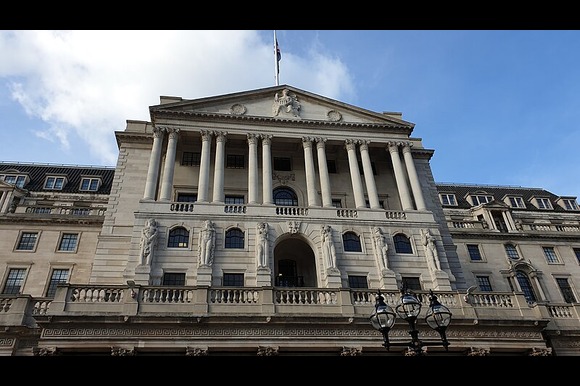The Bank of England maintained its primary interest rate at 4.50 percent on Thursday, despite the sluggish growth of the economy and the increasing uncertainty stemming from the tariff policies implemented by the Trump administration in the United States.
This decision by the nine-member Monetary Policy Committee was anticipated, occurring just a day after the US Federal Reserve also opted to keep interest rates steady.
The minutes from the meeting revealed that eight members supported maintaining the current policy, while one member advocated for a reduction of a quarter percentage point.
Since last August, the rate-setting committee has lowered the Bank of England’s main rate from a 16-year peak of 5.25 percent by a quarter percentage point on three occasions, with the most recent reduction occurring in February, following a decline in inflation from over 10 percent, which had reached multi-decade highs. Nevertheless, inflation currently stands at 3 percent, exceeding the bank’s target of 2 percent, and is projected to rise further in the coming months, even without considering the impact of tariffs from the Trump administration. Many economists predict it could escalate to as high as 4 percent, as businesses are likely to increase prices due to a significant rise in the minimum wage and higher payroll taxes.
“There is considerable economic uncertainty at present,” stated Bank Governor Andrew Bailey. “We still believe that interest rates are on a gradually declining trajectory, but we have decided to keep them at 4.5 percent today.” If policymakers continue with their recent cautious approach, another rate cut may be anticipated in May, when they will have access to the bank’s latest economic forecasts and when Governor Bailey will hold his next press conference.
Bailey indicated that rate-setters will be closely monitoring the developments in both the global and domestic economies. He emphasized that regardless of the circumstances, it is their responsibility to ensure that inflation remains low and stable. The US Federal Reserve, which decided to maintain borrowing rates on Wednesday, also conveyed uncertainty regarding the short-term economic outlook, especially considering the tariff policies of US President Donald Trump, which economists fear could hinder global growth and contribute to rising prices.
The British economy, ranked as the sixth-largest, managed to achieve a modest growth rate of 0.1 percent in the fourth quarter, a result that has disappointed the new Labour government, which has prioritized economic growth as its primary policy objective. Since the global financial crisis of 2008-2009, the growth performance of the British economy has significantly lagged behind its long-term average.
Critics argue that Treasury chief Rachel Reeves bears some responsibility for the negative economic news following Labour’s return to power in July after a 14-year absence. They contend that her overly pessimistic outlook upon assuming her position, coupled with tax increases—particularly on businesses—has contributed to the current economic challenges.






